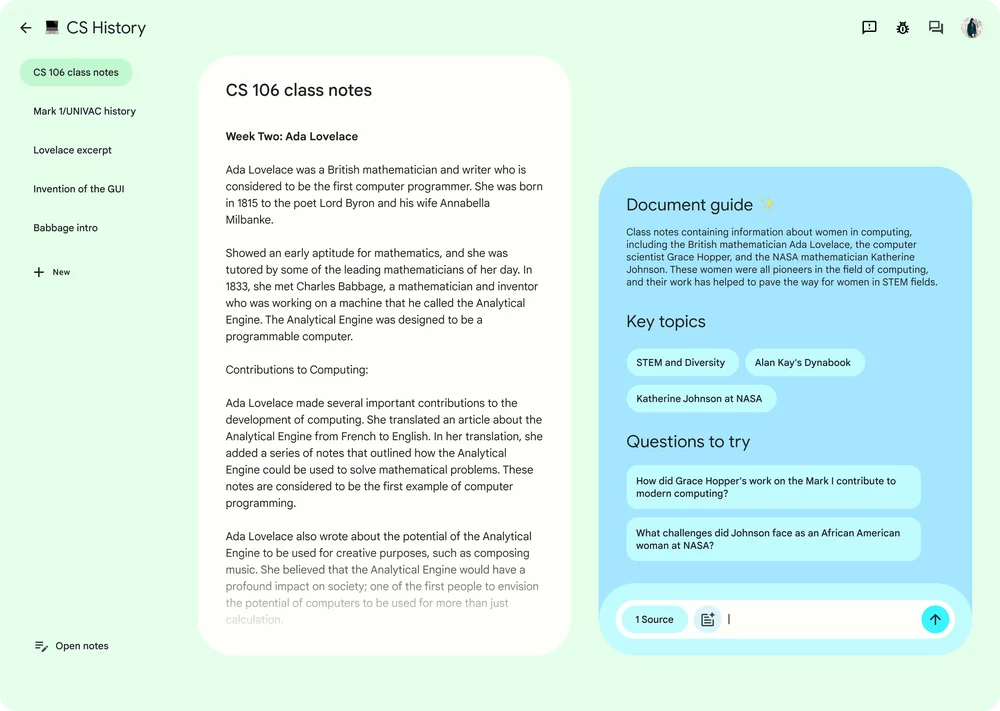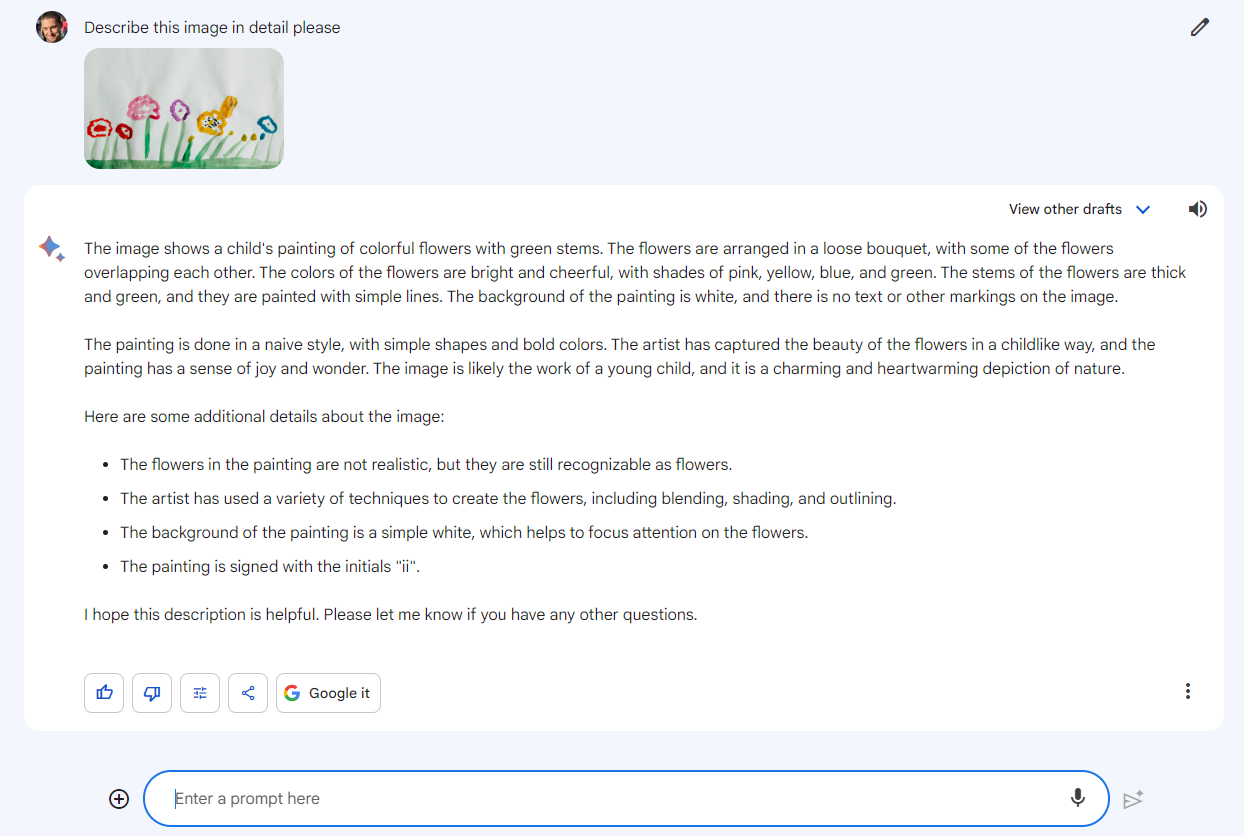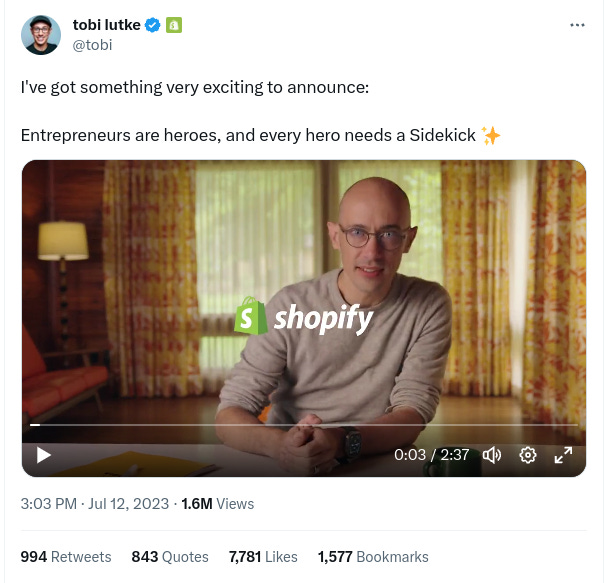10X AI (Issue #10): Better Bard, Claude 2, Stable Doodle, and Very Questionable Pogo Sticks
Plus Shopify's new Sidekick, Google's NotebookLM, Firefly's worldwide expansion, upgrades to Quora's Poe, and OpenAI's streak of collaborations.
Happy Sunday, friends!
I’m gearing down for the summer, so I’ll mostly stick to a single post per week over the next few weeks.
Today’s 10X AI is an all-news edition. Unlike the two weeks before it, this one was rich on developments that’ll impact the average user.
Let’s get to it.
🗞️AI news
Here are the highlights of this busy AI week.
1. Bard gets a few upgrades
After being quiet for a while, Google just added a whole slew of features to Bard.
The most notable one is that Bard can now see images, just like Bing. You should be able to use this feature for all of the same practical purposes.
Also, Bard finally made it to Europe, which means that yours truly can use it at last:
In addition, you can now:
Communicate with Bard in over 40 languages
Hear Bard’s replies spoken out loud
Change the tone of its responses
Pin, rename, and share conversations
Bard’s underlying PaLM 2 model is still underwhelming compared to GPT-4, but these quality of life improvements are certainly welcome.
2. Stability AI launches Stable Doodle via Clipdrop
Stability AI continues to expand the suite of features available in Clipdrop. The latest tool is Stable Doodle, which lets you draw a rough sketch and ask Stable Diffusion to do the rest using an accompanying text prompt:
Now, sketch-to-image tools aren’t a new concept. Diffuse The Rest has been available on Hugging Face since late last year, and I’ve covered Scribble Diffusion in my very first edition of 10X AI.
But Stable Doodle runs the latest Stable Diffusion XL model under the hood and uses the T2I-Adapter for better input guidance. This means that both the quality and accuracy of the resulting images should outperform the other tools. At least in theory.
3. Anthropic releases Claude 2
While GPT-4 is still the best LLM out there, Anthropic’s Claude is inching ever closer. The newly released Claude 2 shows notably improved performance across several benchmarks.
According to Ethan Mollick, Claude 2 might actually be the best AI model for working with longer documents due to its huge context window and ability to summarize PDFs and other file formats.
If you’re located in the US or the UK, you can test drive Claude 2 for free.
4. Google opens up NotebookLM for testing
Google makes a second appearance on this list with its release of NotebookLM (aka “Project Tailwind”).
NotebookLM is essentially a chatbot grounded in your own Google Docs that can:
Automatically generate a summary of the document with key points
Answer questions about the content of the document
Generate ideas based on the document

NotebookLM is currently only available to US residents and there’s a waitlist.
5. Quora gives Poe a boost
Quora’s chatbot Poe (powered by LLMs from OpenAI and Anthropic) just got a bunch of under-the-hood improvements:
New models with longer context windows, including Claude 2, ChatGPT-16k, and GPT-4-32k.
Ability to add way more context to your chats by uploading files or pointing to external URLs
“Continue chat” feature that lets anyone pick up a publicly shared Poe chat and continue it privately. This is also useful for sharing your own chats with all the uploaded files or retrieved URLs used to enrich it.
You can check out Poe for free.
6. Shopify dives into AI with “Sidekick”
Shopify has just announced that they’re building an infinitely helpful AI assistant that can help entrepreneurs grow their business.
The goal is for the chatbot to be well-versed not only in Shopify itself but entrepreneurship more broadly. Anyone with a Shopify store should be able to consult Sidekick to understand their store’s performance, get ideas to improve their business, and make changes to the store on the fly.
Sadly, due to Elon Musk’s beef with Substack, I can’t embed the tweet with the video directly. But if you’re curious, click the screenshot below to watch Tobi Lutke’s intro to Sidekick:
7. Firefly goes global
Adobe has announced that it’s rolling out its Firefly image generator to users worldwide.
Firefly will now understand text prompts in 100 languages. (Including Klingon, for what I can only guess are meme-related reasons.)
On top of that, the user interface will be localized to 20 languages.
8. OpenAI is on a deal-making spree
OpenAI has just signed two seemingly very similar deals—one with Shutterstock and one with The Associated Press.
Under both agreements, OpenAI gets to license Shutterstock’s/AP’s data for training its models while giving the two partners priority access to its tech offerings.
While this doesn’t have any immediate impact on the average user, it signals a shift toward more transparency in training LLMs. It also confirms that OpenAI is gearing up for the long haul and not resting on its laurels.
9. Musk’s and Meta’s "coming soons”
These last two items aren’t classic 10X AI material, but I’d be remiss not to touch upon them with all the buzz they’re generating.
Elon Musk, letter X’s biggest fan, just announced he’s starting his own artificial intelligence company called xAI. His ambition is to “understand the universe,” despite the fact that The Hitchhiker's Guide to the Galaxy has already cracked that puzzle almost half-a-century ago.
In parallel, Meta is expecting to release a commercial version of its LLaMA model. This will let businesses build on top of the LLM while helping Meta become a serious contender in the AI game. At least that’s the plan.
🤦♂️10. AI fail of the week
“Back in my day, you could actually jump on a pogo stick.”
Sunday poll time
Previous issue of 10X AI:
10X AI (Issue #9): Code Interpreter for All, AI Voice Tools, and Synchronized Horror
Happy Sunday, friends! Welcome back to 10X AI: a weekly look at beginner-focused AI news, tools, and tips. Let’s get to it. 🗞️AI news It’s been a rather uneventful week in terms of beginner-friendly releases…with one major exception. 1. Code Interpreter is rolling out to ChatGPT Plus users








I voted for Code Interpreter, but that's mainly because I feel its impact immediately, and I know it'll improve rapidly. I just made a really awful GIF, but... I made a GIF!